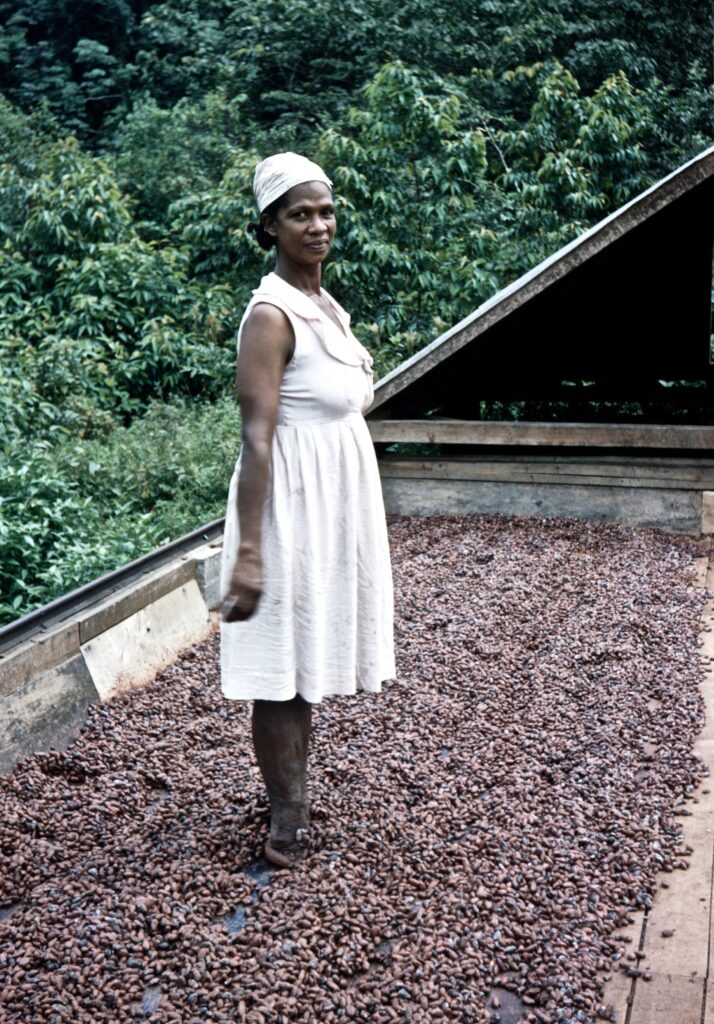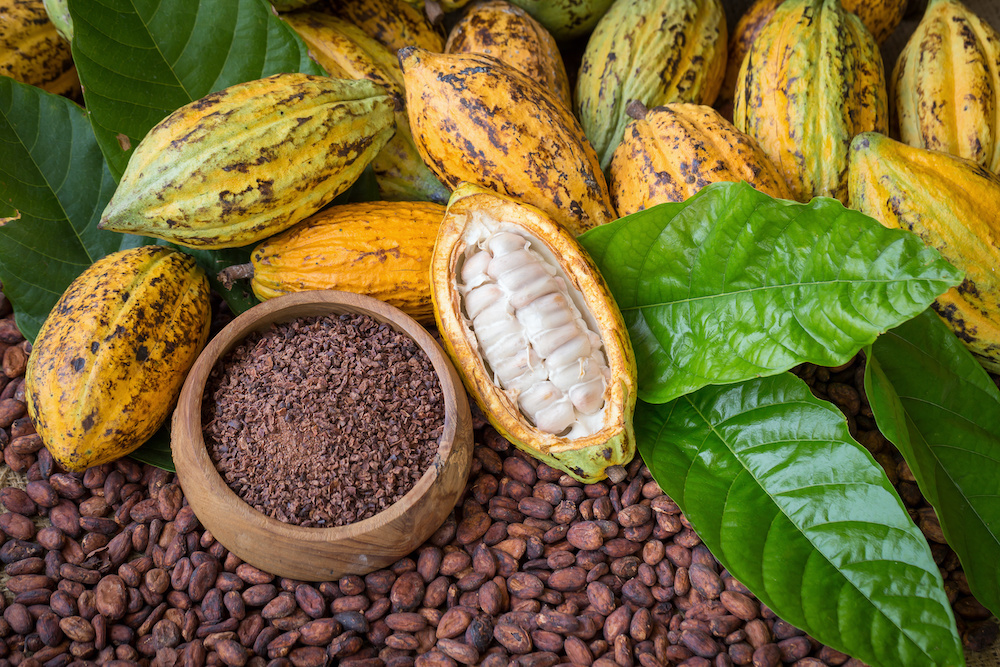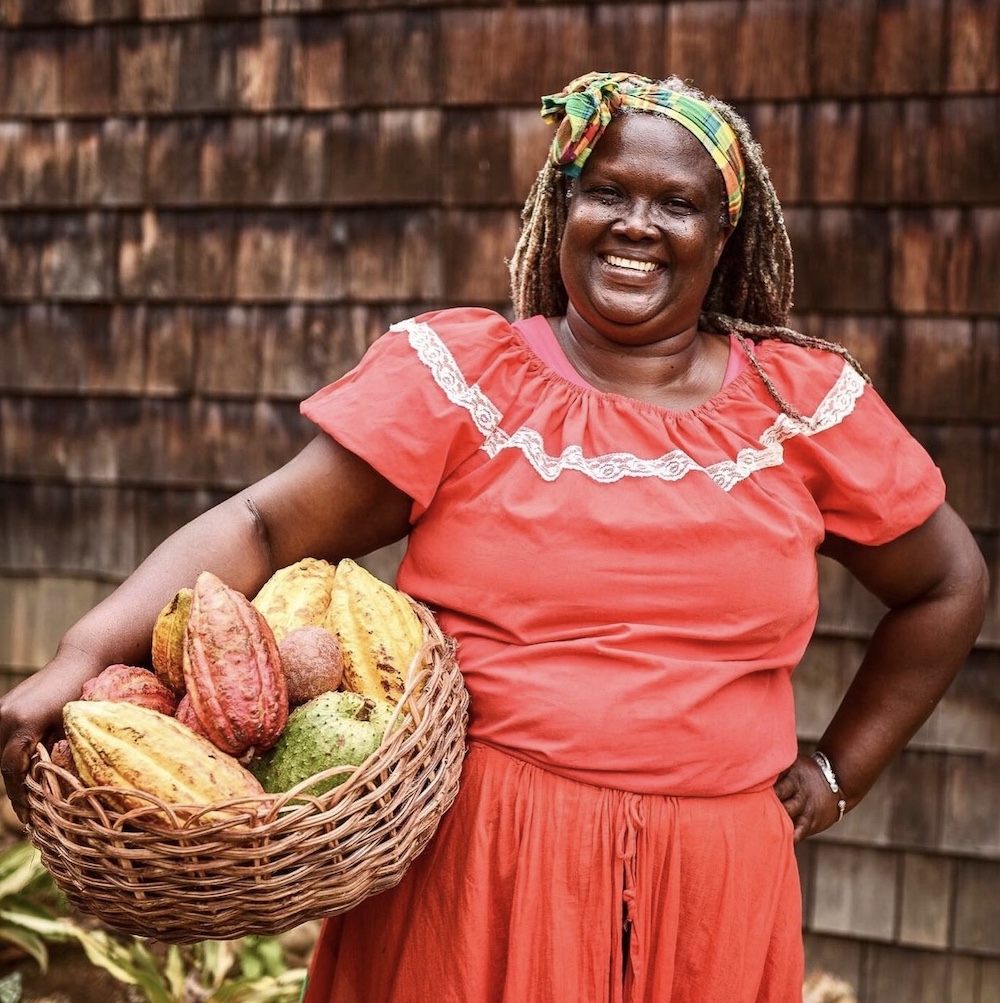This June is National Caribbean American Heritage Month. And as it comes to a close, we’re kicking off a new series on the blog titled, Caribbean Beauty & Wellness Rituals. As many of you know, I was born and raised on the Caribbean island of Trinidad & Tobago (T&T). My alternative medicine influences began in the tiny village where I grew up, a place that was home to a garden of Eden, blessed with fruits, vegetables and herbs galore. My grandmother stepped outside to pick a herb for almost every ailment we had.
The same can be said for the entire island of T & T and the other Caribbean islands. They are home to an array of foods, herbs, and ingredients that contribute to the beauty and wellness practices of people at home and abroad.
Since I’m from the Island of Trinidad & Tobago, the most southerly island on the archipelago, we’ll start island hopping from there and work our way up.
First beauty/wellbeing rituals is one of my favorite foods. Cacao (Ka. Kaw) or Cocoa (Ko. ko). In the Caribbean, the term cocoa is used loosely. There is no distinction between the heated and non-heated form when it comes to pronouncing the name. It’s all cocoa. But for some context, Cacao refers to the unheated beans or the raw beans. Cocoa refers to the roasted beans and powder.
What is Cacao?
Cacao beans is a super food grown on the Therobroma cacao tree, and found in some South American, Caribbean and other hot, humid climates. In fact, some of the best cacao (Trinitario – hybrid of Forastero and Criollo) in the world is grown in Trinidad & Tobago, Jamaica, Grenada, Dominica and St. Lucia.
According to the World AgroForestry Centre, there are three broad types of cocoa:
- Forastero
- Crillo
- Trinitario
According to an FAO document, Trinitario plants are cultivated hybrids that are mainly grown in the Caribbean, further developed in Trinidad.
Growing up, there was an endless supply of cacao beans in my village, which meant consuming it in every form or food possible. This “food of the Gods” as it was called by the Myas is one of the best sources of antioxidants on the planet, and consumed the right way, it’s benefits can be enormous.
Aside from Trinidad & Tobago, cacao can also be found on other islands including, Jamaica, Haiti, Dominica, Barbados, St. Vincent, Dominican Republic, St. Kitts Nevis, St. Lucia, Puerto Rico, Bermuda, Bahamas. I think it’s safe to say that every Caribbean island grows cacao to some extent.









Ways to Enjoy Cacao
- Skin care products: face masks, body scrubs, creams/lotions
- Supplements
- Smoothies
- Teas (avoid adding dairy as it inhibits the absorption of antioxidants)
- Stews
- Baked goods
- Snacks: chocolates
Nutrients Found in Cacao Beans
- Vitamins: B1, B3, B5, B9, E
- Minerals: Calcium, Iron, Potassium, Magnesium, Zinc, Sulfur. Manganese,
- Proteins
- Carbohydrates
- Fats: Steric Acid, Palmic acid, Cleic acid
- Polyphenols: Flavanoids
Health Benefits of Cacao Beans
- Decrease in cellular degeneration
- Lower blood pressure
- Improved circulation
- Antidepressant
- Increased energy
- Weight loss
- Decreased risk of diabetes and cancer
Steps From Bean To Bar or Powder
- Harvesting
- Fermenting
- Drying
- roasting
- Cracking & winnowing
- Grinding & chonching
- Tempering
- Molding
- Wrapping
You can learn more about the process of beans to bar, here. https://www.scienceofcooking.com/chocolate/how-is-chocolate-made.htm
liked this post? leave a comment!